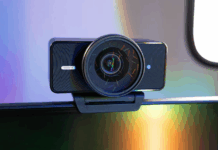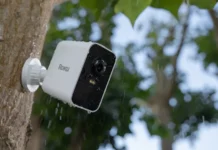Sony has just surprised the photography world with the introduction of the RX1R III, a 35mm full-frame compact fixed lens camera. Released almost a decade after the RX1R II, it features a 61-megapixel Exmor R sensor, as well as Sony’s latest image processing technology that promises low noise and wide dynamic range.
In addition to all the new technologies, the RX1R III is smaller and more streamlined than before, and significantly lighter at 17 ounces than its main competitors, the Leica Q3 and Fujifilm GFX100RF. As a result, it is designed for street photographers, serious amateurs, and other users.
This small size is partly due to the Zeiss Sonnar T 35mm f2 lens, which is partly inside the body. Although it is more compact than before, it has the same optics as the previous model and offers a high level of sharpness and color reproduction, according to Sony. It features a macro ring that allows you to get up to 20 cm closer to your subjects, as well as Sony’s new “Step Crop Shooting” feature, which allows you to shoot at 35mm, 50mm and 70mm focal lengths by cropping the frame on the sensor, just as you can do on the GFX100RF with a similar button.
The RX1R II has up to 15 stops of dynamic range thanks to its high-resolution sensor and image processor. It also has an anti-reflective coating and no optical low-pass filter to improve image quality, although this can cause moiré and other artifacts. The shooting speed is not very fast – only 5 frames per second, although the camera is clearly not designed for sports shooting.
The electronic viewfinder is mid-level with a resolution of 2.36 million dots and 0.7x magnification, although the rear display offers a decent resolution of 2.4 million dots. However, unlike the previous model’s viewfinder, which tilted outward and upward, it’s fixed to keep weight and size down. It also lacks any internal or optical stabilization, relying solely on electronic shake reduction.
Thanks to Sony’s latest Bionz XR processors and artificial intelligence, the camera promises to accurately track “objects, human bodies, heads, and eye positions” even when their faces are not visible. It uses 693 phase-detection autofocus points, covering about 78 percent of the image, just like the Sony A7R V.
It’s not as powerful as the A7R V for video, but it can still handle 4K 30fps video with 10-bit 4:2:2 color sampling, as well as 1080p video at up to 120fps. There’s no logarithmic shooting mode, but you do get a logarithmic-like S-Cinetone mode that expands the dynamic range a bit. Other features include a single SDXC UHS II slot, a microphone input (but no headphone jack), a microHDMI port, and a USB-C input.
The R1XR III is much more expensive than the RX1R II at launch. It will soon be available for pre-order for $5,100, and delivery will begin on July 31. Sony also offers several accessories (also expensive), including a $300 (!) thumb holder, a $250 (!) case for the body, and a $200 (!!) lens hood.









